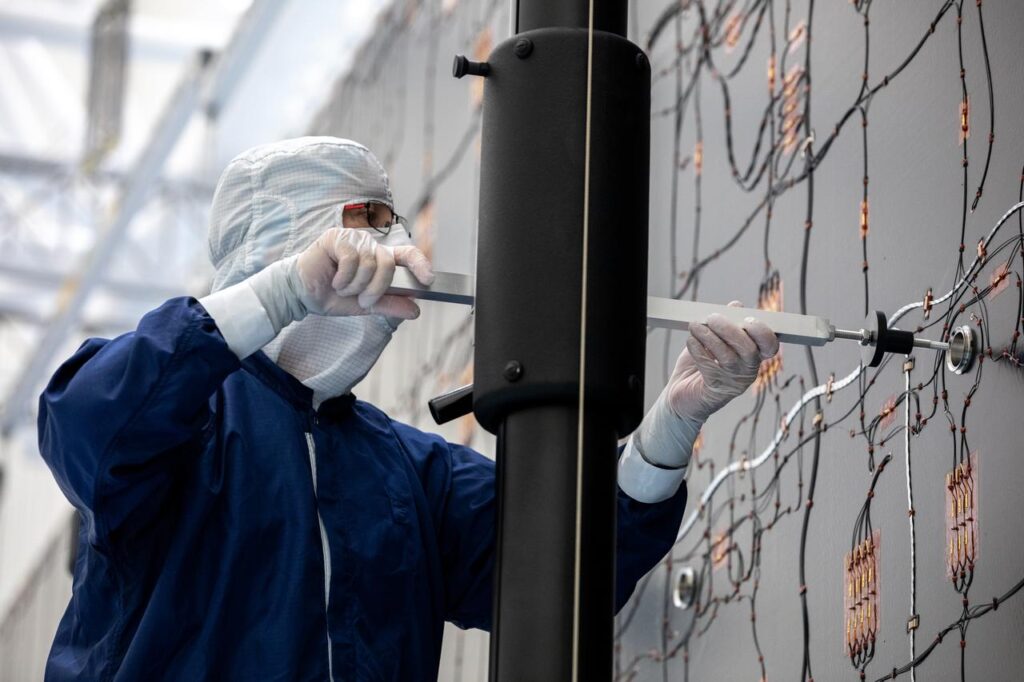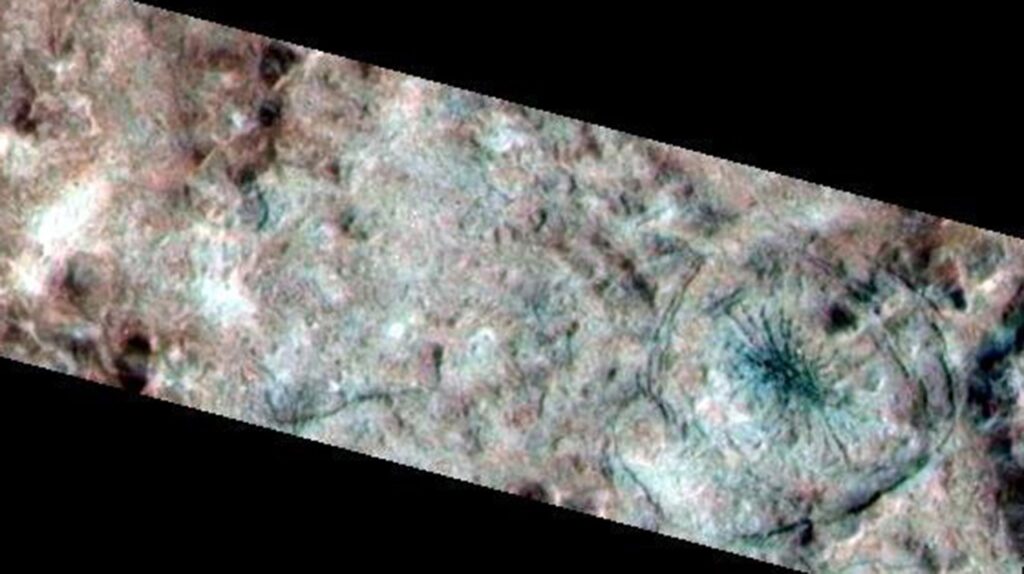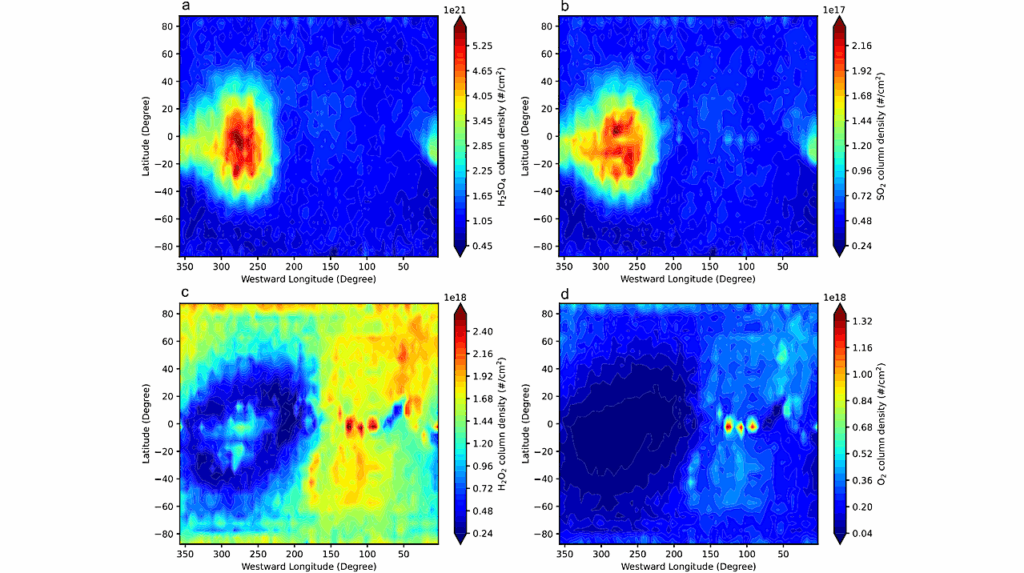Europa Clipper Astrobiology Mission Solar Array Deployment Test

Processing of the large solar arrays built for NASA’s Europa Clipper is now underway inside the Payload Hazardous Servicing Facility at the agency’s Kennedy Space Center in Florida.
Planned to arrive at Jupiter in April 2030, the spacecraft will study Jupiter’s moon Europa, which shows strong evidence beneath its icy crust of a global ocean over twice the volume of all Earth’s oceans. Europa is currently considered one of the most promising habitable environments in our solar system.
Once processing of the first five-panel solar array is complete, technicians will remove it from the gravity offload fixture, which helps support the weight of the array. The same steps will then be repeated with the second solar array. Built by Airbus in Leiden, Netherlands, the arrays arrived at Kennedy late last month by truck, after travelling to the U.S. by air.
When both solar arrays are installed and deployed on Europa Clipper – the agency’s largest spacecraft ever developed for a planetary mission – the spacecraft will span a total length of more than 100 feet and weigh 7,145 pounds without the inclusion of propellants. The spacecraft needs the large solar arrays to collect enough light to power it as it operates in the Jupiter system, which is more than five times as far from the Sun as Earth.
Europa Clipper is being assembled at NASA’s Jet Propulsion Laboratory in Southern California and is managed in partnership with Johns Hopkins University Applied Physics Laboratory in Laurel, Maryland. The spacecraft will ship to Florida later this year for launch aboard a SpaceX Falcon Heavy rocket from Kennedy’s Launch Complex 39A. NASA’s Launch Services Program, based at Kennedy, is managing the launch service.

The first of two five-panel solar arrays built for NASA’s Europa Clipper stands inside the Payload Hazardous Servicing Facility at the agency’s Kennedy Space Center in Florida in preparation for inspection and cleaning as part of assembly, test, and launch operations on Wednesday, March 6, 2024. When both solar arrays are installed and deployed on Europa Clipper – the agency’s largest spacecraft ever developed for a planetary mission – the spacecraft will span a total length of more than 100 feet and weigh 7,145 pounds without the inclusion of propellants.
NASA ID: KSC-20240306-PH-JBS01_0005 Date Created:2024-03-06 Larger Image

Technicians examine the first of two fully extended five-panel solar arrays built for NASA’s Europa Clipper suspended on a support system called a gravity offload fixture during inspection and cleaning as part of assembly, test, and launch operations inside the Payload Hazardous Servicing Facility at the agency’s Kennedy Space Center in Florida on Wednesday, March 6, 2024. Another name for the gravity offload fixture is the Transportable Large Envelope Deployment Facility (T-LEDF). When both solar arrays are installed and deployed on Europa Clipper – the agency’s largest spacecraft ever developed for a planetary mission – the spacecraft will span a total length of more than 100 feet and weigh 7,145 pounds without the inclusion of propellants.
NASA ID: KSC-20240306-PH-JBS01_0049 Date Created:2024-03-06 Larger image

Technicians examine the first of two fully extended five-panel solar arrays built for NASA’s Europa Clipper suspended on a support system called a gravity offload fixture during inspection and cleaning as part of assembly, test, and launch operations inside the Payload Hazardous Servicing Facility at the agency’s Kennedy Space Center in Florida on Wednesday, March 6, 2024. Another name for the gravity offload fixture is the Transportable Large Envelope Deployment Facility (T-LEDF). When both solar arrays are installed and deployed on Europa Clipper – the agency’s largest spacecraft ever developed for a planetary mission – the spacecraft will span a total length of more than 100 feet and weigh 7,145 pounds without the inclusion of propellants.
NASA ID: KSC-20240306-PH-JBS01_0074 Date Created:2024-03-06 larger image
Astrobiology








